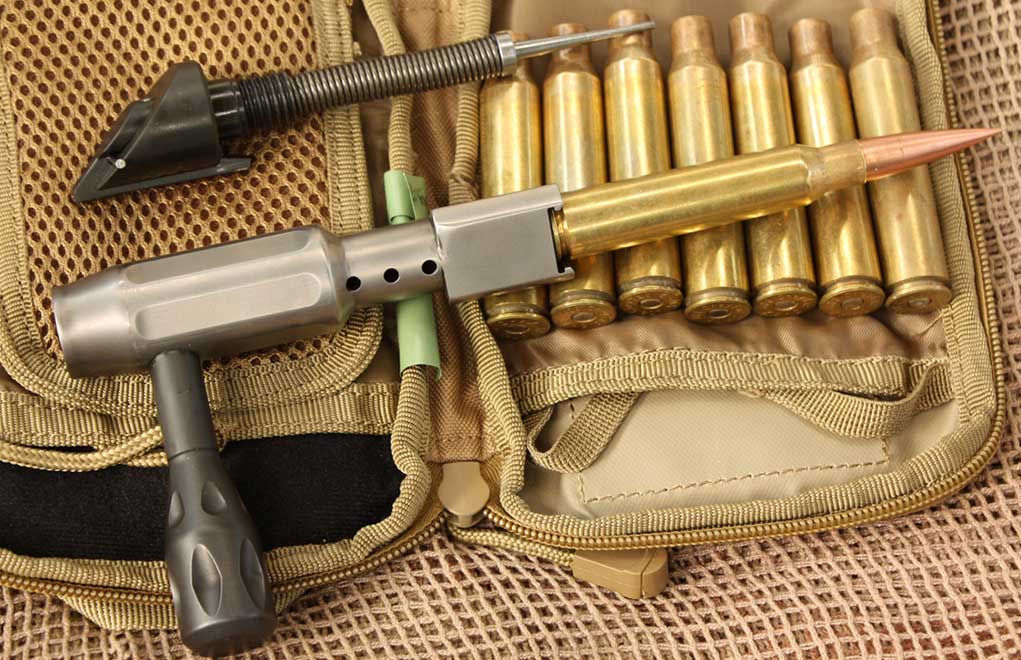
The author takes a look at the ultra-powerful .408 CheyTac and compares it against other anti-materiel cartridges like .50 BMG.
The .408 CheyTac is an odd cartridge, in that it has almost no practical civilian use and doesn’t fit any military need well enough to result in widespread adoption.
Like many niche calibers, there’s a certain mystique that the .408 has attained thanks to firearms culture and, of course, the movie Shooter. Almost everyone who longs to own a CheyTac M200 Intervention rifle in this caliber does so because it was prominently featured in that film.
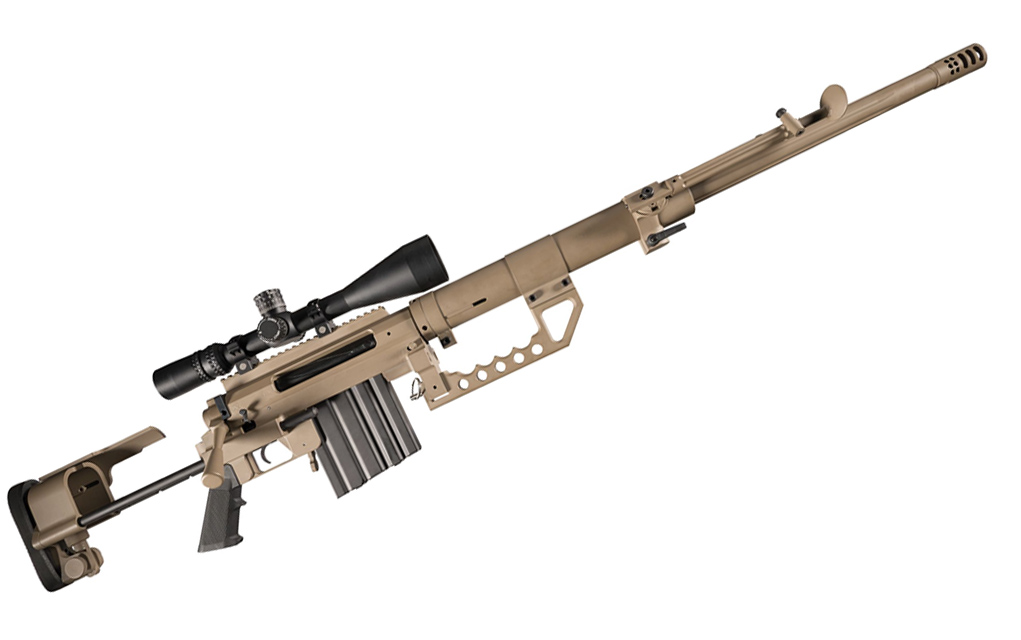
Pop-culture references aside, let’s take a peek behind the curtain and discuss what the cartridge was made to do, what it does and what anyone would stand to gain from using it.
What’s An Anti-Materiel Rifle?
Anti-materiel rifles are specialized firearms designed to destroy or otherwise disable equipment, hardware, vehicles and similar targets that are resistant to conventional small arms fire.
The concept was born out of the anti-tank rifles of WWI. These were used even more widely in the Second World War, but as tank armor grew more effective the job of the rifles gradually shifted to be more anti-materiel in nature. By the end of the war, tanks had generally become robust enough to render the anti-tank rifle obsolete, despite this they stayed relevant thanks to their continued effectiveness against other, lighter targets. Some WWII anti-tank rifles like the Soviet PTRS-41 are still actively used in an anti-materiel role around the world today.
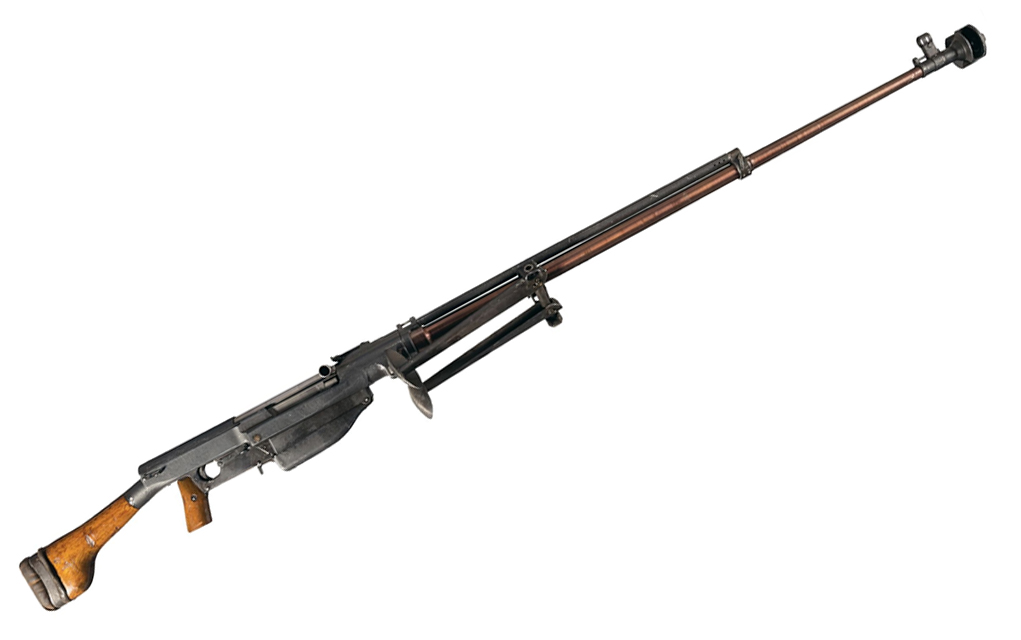
Rifles of this description are traditionally chambered for very large centerfire cartridges, typically .50-caliber or bigger. Some popular anti-materiel rifle cartridges over the years include .50 BMG, 14.5×114mm Russian, 12.7x108mm Russian and 20mm.
The .408 CheyTac cartridge, however, was built differently. It was devised to deliver .50 BMG-like terminal performance or better with a smaller-diameter projectile, giving it a lower total weight and enabling soldiers in the field to either lighten their pack or carry more ammo without making other concessions to their loadout. Equal performance at a lower weight certainly sounds promising.
What Is .408 CheyTac?
The .408 CheyTac, or more accurately .408 Cheyenne Tactical, started as a wildcat cartridge combining a dangerous game case with a high-BC bullet to achieve maximum effective range and multi-role capability.
The inventors are Dr. John Taylor and William Wordman. The latter was a machinist who was seeking to improve on Taylor’s earlier wildcat, the .400 Taylor Magnum. The .400 Taylor is more or less a .505 Gibbs (a dangerous game cartridge) necked down to 0.375 inches.
To create the .408 CheyTac, the case is trimmed to 3.04 inches in length from 3.15 inches and necked down to .408 inches. To solve the issue of case pressures, some different metallurgy had to be used to create stronger brass capable of handling the nearly 64,000 psi of chamber pressure that the .408 produces.
The result is a cartridge that will propel a 419-grain solid projectile at 3,000 feet per second with 8,373 foot-pounds of energy.
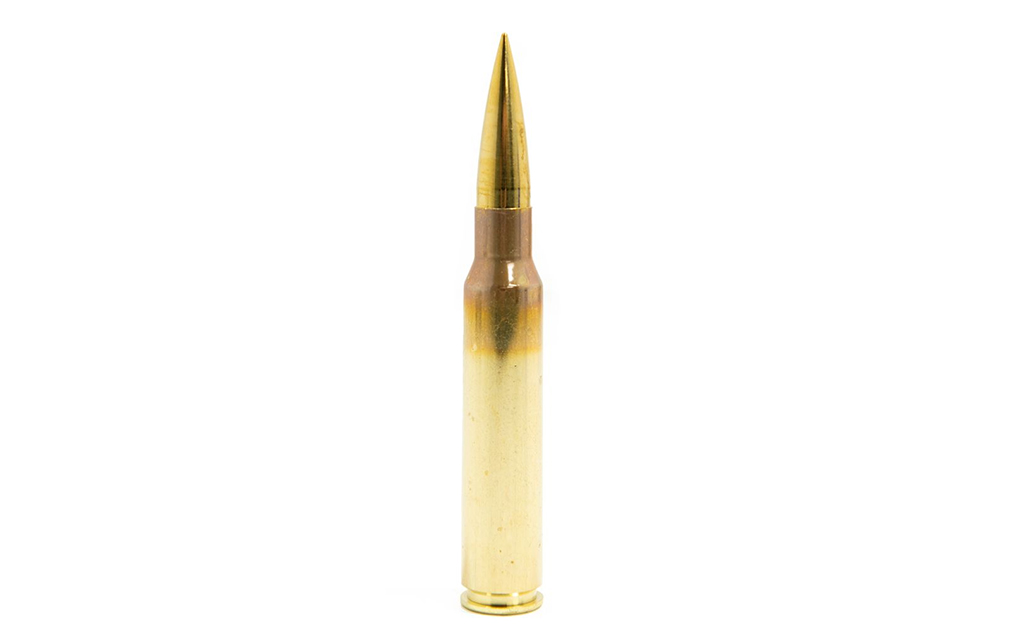
To stabilize the bullet, solid projectiles must be used rather than jacketed. This gives the bullet more stable flight, which is partly why (along with the bullet’s aerodynamic profile) it has such a ridiculously high ballistic coefficient. Various ammunition manufacturers have claimed that their .408 CheyTac projectiles have BCs of 0.949 and higher. While these figures have been disputed, it seems apparent that the bullets perform very efficiently in flight regardless of what the exact numbers are.
But what does this all actually mean?
The .408 CheyTac puts a lot of powder behind a large, heavy and very aerodynamic bullet. As a result, it stays supersonic a lot longer (potentially to over 2,300 yards) and can penetrate things better at greater distances. It does so more efficiently than .50 BMG and with a longer effective range than .338 Lapua Magnum.
Ergo, it has the capabilities of a long-range sniper rifle round and an anti-materiel rifle round all rolled into one.
.408 CheyTac Ballistics
The .408 CheyTac is incredibly impressive.
The original load is a 419-grain solid projectile, such as CheyTac Ammo’s load with the company’s patented Balanced Flight Projectile. This has an advertised G1 ballistic coefficient of 0.949, which is astounding. Here’s a 3,000-yard trajectory table for that load using Shooter’s Calculator. All tables were calculated presuming a 1.5-inch sight height, a 10 mph 90-degree crosswind, zero corrections for atmosphere and a 100-yard zero.
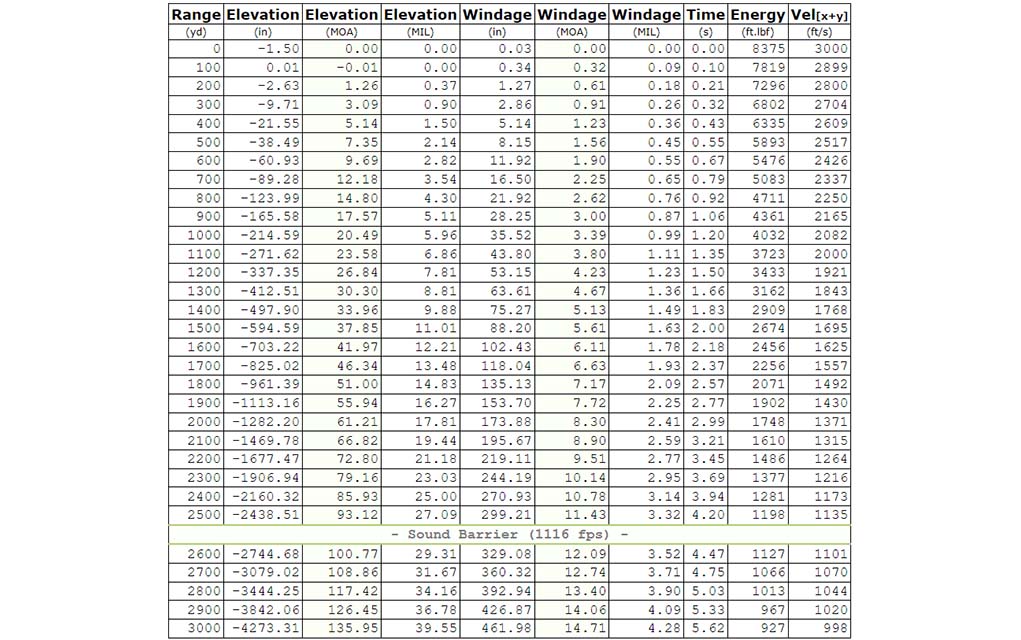
As you can see, it stays supersonic past 2,500 yards. At 3,000 yards, it still has more velocity (and almost double the energy) of a .357 Magnum at the muzzle.
Another “common” commercial load is a 400-grain solid projectile by SBR Ammo, with an advertised 0.983 G1 ballistic coefficient.
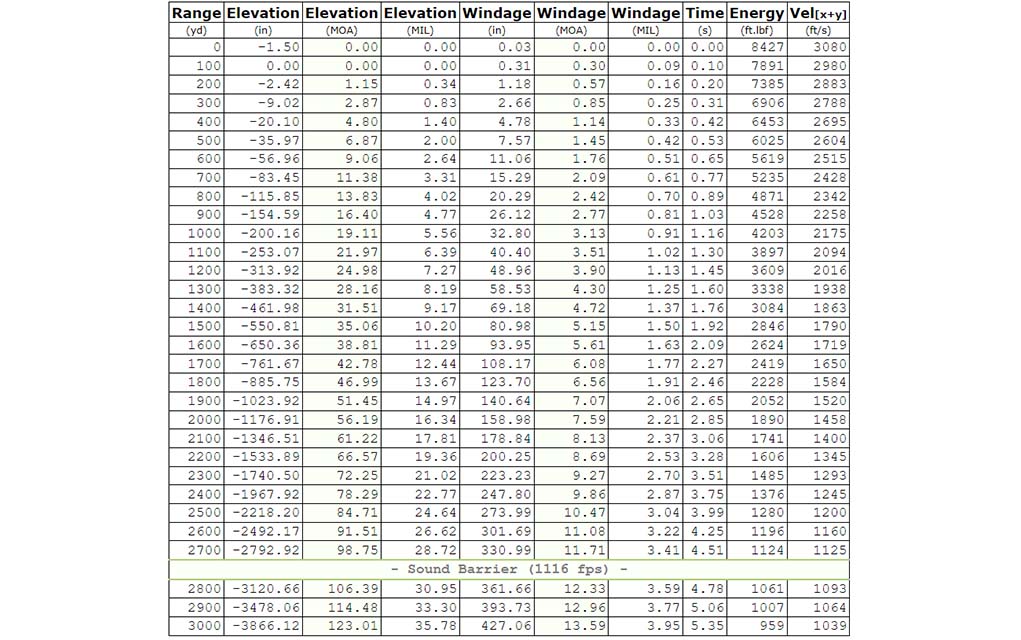
The table shows that it doesn’t go transonic until more than 2,700 yards. At 3,000 yards, it still has more energy than a .44 Magnum at the muzzle!
.408 CheyTac Vs .50 BMG
This is the same trajectory table for Hornady’s A-Max Match .50 BMG load, with a 750-grain bullet and a G1 BC of 1.05.
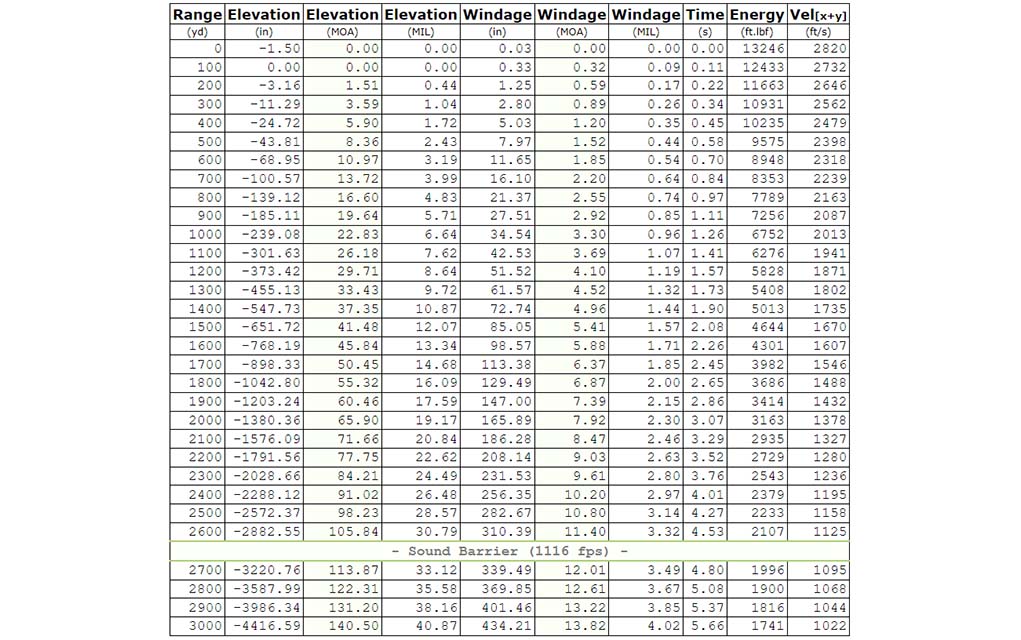
Comparing the results with those of .408 CheyTac shows that .408 is every bit .50 BMG’s equal in terms of velocity and range, only trailing behind in terms of energy.
This is incredibly impressive, given that .408 CheyTac is half the size of .50 BMG.
The .50 BMG is an enormous cartridge. The case length is 3.91 inches, with a COL of 5.45 inches, a capacity of 292.8 grains of water and a base diameter of 0.8 inches. One loaded cartridge weighs just over 4 ounces.
By contrast, .408 CheyTac has a case length of 3.028 inches, a COL of 4.465 inches and a capacity of 159 grains of water. It weighs nearly half that of .50 BMG.
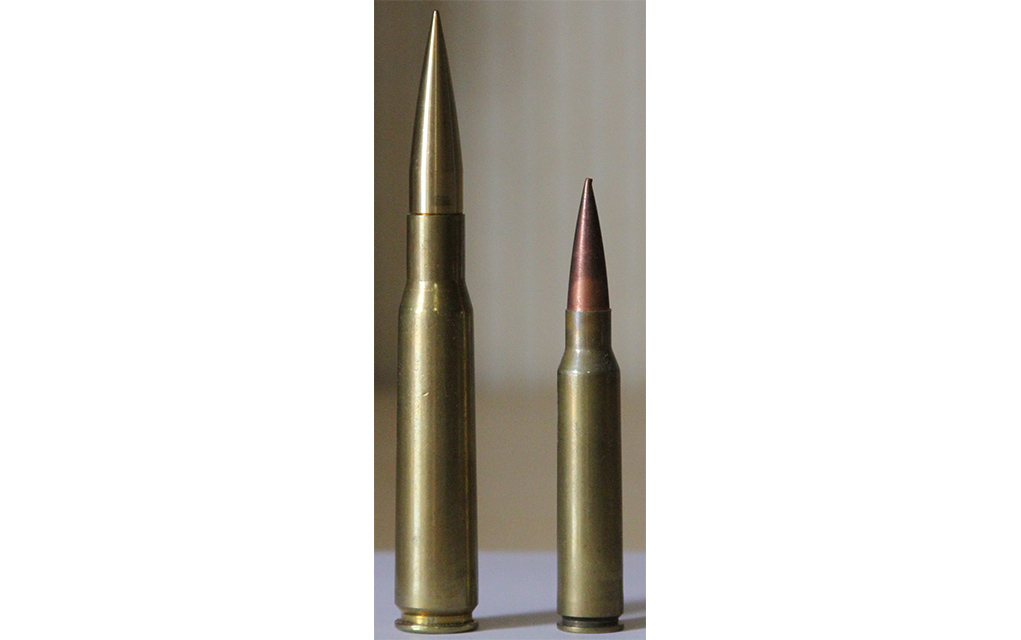
But what you have to remember about ballistic tables is that they only give you a very dry, on-paper sense of what a bullet does. How the bullet actually performs in the real world is something entirely different. What is .50 BMG known to do that the .408 CheyTac doesn’t?
Well, at this point…almost everything. The .50 BMG has proven itself as an anti-materiel, anti-aircraft and anti-…basically everything short of tanks cartridge. The armor-piercing ammunition works. The incendiary and standard tracers work too.
We know they work because they’ve been heavily used to great effect in two-way firing ranges all over the world since the .50 BMG was invented. If .408 CheyTac has been used in a theater of war, knowledge of it is either hidden or so small in scale that it’s never been disclosed.
And that is ultimately why it hasn’t caught on to the extent that it would seem it should. It doesn’t do anything so much better than .50 BMG that it justifies the expense of replacing it with new rifles and ammunition.
You can get a basic .50 BMG rifle for around $1,500. A Barrett M99, the company’s single-shot bolt-action, will run you about $5,000, and that’s for an actual Barrett rifle. Feeding a .50 BMG is also insanely expensive, but cheap ammo is at least somewhat attainable.
In contrast, getting into the .408 CheyTac is a much taller order. About the “cheapest” rifle you’re likely to find is the DesertTech HTI which has an MSRP of $7,600 for the basic model. Most others will run you well north of $10,000.
Then you have the cost of feeding it. You can get .50 BMG ammo for less than $40 for 10 rounds, which is stupidly expensive for 10 rounds but not awful when accounting for the size and specialty of the ammo. You can find it in some stores, and it’s certainly available online.
While .408 CheyTac ammo theoretically exists…it’s like hen’s teeth to find. AmmoSeek has over 5 pages of .50 BMG ammo, but only a single result for .408 CheyTac at the time of writing. That listing was from Optics Planet…for about $15 per round. That said, if you can afford a .408 rifle, you can probably afford the ammo too. Your bigger problem will likely be just finding any for sale. It’s also worth mentioning that .408 projectiles and reloading tools are available, so loading your own is theoretically possible too.

Does The Military Use .408 CheyTac? What Could I Use One For?
There are some reports of the M200 Intervention and the .408 CheyTac cartridge being purchased by various militaries, but nothing on a serious scale.
Look up the list of the world’s longest sniper shots, and you’ll notice it is not on it. A .408 CheyTac was used to set a world record long-distance rifle shot…in 2018. It’s since been not only broken, but shattered with a .416 Barrett.
In other words, while you technically can do things with it, mass adoption has not occurred.
Why not?
Mostly because whatever increase in capability the cartridge gives you isn’t so much of an improvement that it justifies the monetary and logistical cost of a caliber change.
You Really Just Want A CheyTac M200 Intervention, Don’t You?
If you look at what the on-paper benefits are compared to the cost and availability of ammunition, the only reason to even consider this cartridge is because you want an M200 Intervention rifle from the movie Shooter.
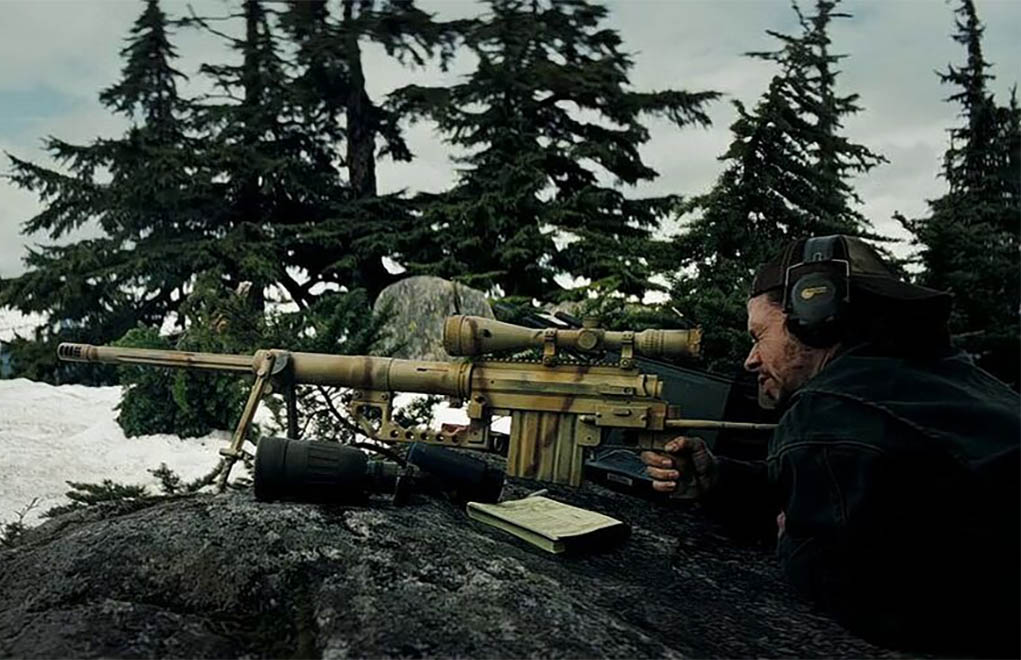
It’s an amazing rifle, and Shooter is a darn good flick. Like so many other boutique guns, the movies make us want stuff that is insanely expensive and desperately impractical. Smith & Wesson could barely give Model 29 revolvers away before Dirty Harry, and Wind River sold a lot of guide guns.
There’s nothing wrong with that, but it is what it is.
The reality is that there are plenty of other long-range cartridges that can do everything you’d want to use .408 CheyTac for, but for a lot less money. It’s an amazing cartridge with a lot of potential. Maybe someday it will be worth getting into…but it is not this day.
Raise Your Ammo IQ:

Next Step: Get your FREE Printable Target Pack
Enhance your shooting precision with our 62 MOA Targets, perfect for rifles and handguns. Crafted in collaboration with Storm Tactical for accuracy and versatility.
Subscribe to the Gun Digest email newsletter and get your downloadable target pack sent straight to your inbox. Stay updated with the latest firearms info in the industry.
